Why Does Bread in the US Taste So Sweet and Unhealthy?
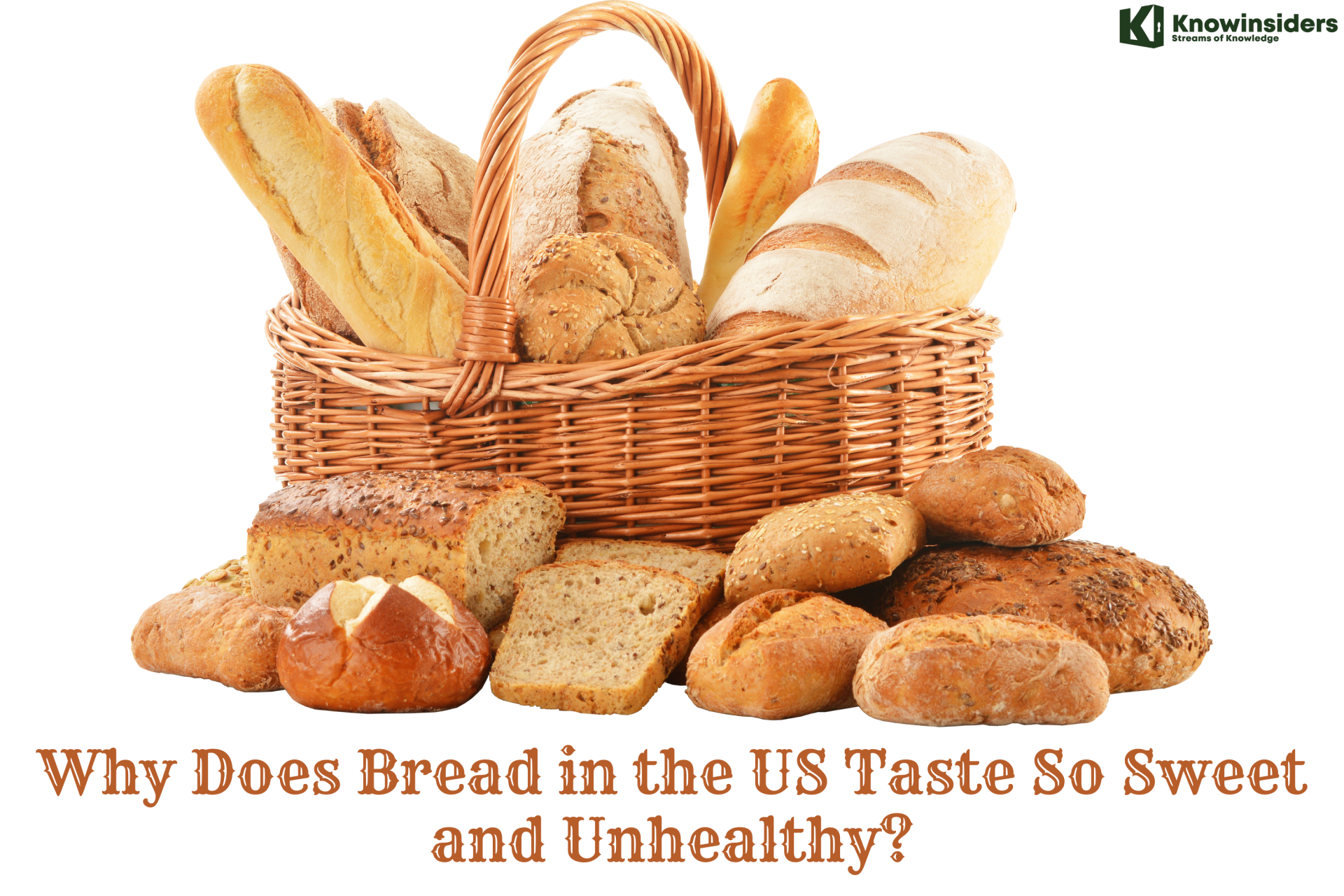 |
| Why Does Bread in the US Taste So Sweet and Unhealthy? |
| Table of Content |
Bread is one of the best things this world has to offer, right? Whether you prefer to slather salted butter onto freshly toasted slices, experiment with sandwiches, or hunt for the best gourmet varieties on the market, it's likely that you have your preferences set when it comes to bread. You may have also noticed that typical American bread is quite different from the kind you get in Europe, and it's easy to pinpoint the exact reason why.
Naturally, with how simple, tasty, and filling bread is, many cultures in history have made their own spins on this staple food. However, the expectation when eating bread in most contexts is that it will be a savory treat. Naturally then, many people who visit America usually have at least one question about the food. Why is American bread so sweet?
The History of Bread in the U.S.A
The history of bread in the USA was very affected by the depression. Bread is a carb-based food, which makes it great for long term sustenance during famines. When the 30’s rolled around and the Great Depression hit, bread was viewed as a type of dessert and even a luxury item. Farmers that were struggling to make ends meet would sell extra wheat, and after the Great Depression had passed, the transformation of bread from necessary sustenance to a staple of the American dream was complete.
After this transformation of white bread, World War 2 came about, and millions of families were separated due to the war. As the military fought against the axis powers, white bread was making its transformation. The high amount of sugar made it perfect for toast, and a sustainable source of food for living on a military check.
When the war ended and people started coming home, a new era of gastronomy had hit across the United States. We saw experimentation and a lot more heavily processed food. At this point, white bread had finally hit its high sugar content that we see today, and American bread had changed forever.
Ingredients Used in American Bread
1. Flour - Less than half of the breads included whole wheat flour, the rest were refined or enriched flours.
2. Salt - required for flavor and to balance the fermentation by the yeast. See #4.
3. Water - try baking bread without it ;-)
4. Yeast- yeast is a living organism. It ferments the carbs in dough and converts them to carbon dioxide, which makes the dough rise.
5. Vitamins & minerals - this is what's added to refined flour - Vitmin B1 (thiamin), Vitamin B2 (riboflavin), Vitamin B3 (niacin), folic acid, and iron. Whole grain flours do not need the addition because they contain these nutrient and more in the bran and germ. In fact, enrichment means returning that which hath been stripped away through the refinement of the wheat...
6. Soybean oil - oil or fats used in bread make the crumb (texture) more tender and rich in flavor (and calories!) They also extend shelf life to some extent, preventing the bread from going stale. Soybean is the cheapest possible oil, and thus is used most. If you prepare your own loaf - try olive oil.
7. Wheat gluten - Gluten increases the dough's ability to rise. It also increases the bread's structural stability and chewiness. Although gluten is naturally present in flour, it requires substantial kneading to be released. Adding wheat gluten is a shortcut.
8. Calcium sulfate – better known as plaster of Paris – is a clear white rock found in nature. Used here as a dough conditioner. Commercial bakeries employ various dough conditioners for several reasons: (1) to shorten dough rising times (2) to increase shelf life and (3) make the dough easier for their machinery to process.
9. Mono and di-glycerides, ethoxylated mono and di-glycerides - derived from animal or plant sources, these additives have multiple roles - they are dough conditioners (improve texture, increase volume), emulsifiers, and release agents (make it easier to get the bread out of the baking pan). A dough conditioner
10. High-fructose corn syrup - many breads employ a sweetener to improve taste as well as help the dough rise. (Yeast love sugar - they ferment it to create carbon dioxide which is what makes the bread rise. HFCS is the cheapest sugar, and that is why manufacturers use it.
11. Calcium propionate - a preservative that inhibits mold and bacterial growth. Considered safe, but in the early 1990's it was linked to attention deficit disorder in children.
12. Soy lecithin - a very popular additive that helps bind the various ingredients in the bread, improves shelf life and also helps.
13. Sodium stearoyl lactylate - used as an emulsifier used as a dough conditioner. It maintains texture, increase the volume of the loaf, keeps fats mixed well with the dough, and serves as a humectant, to absorb more water per loaf (cheapest ingredient is water!). It is also slightly sweet.
14. Monocalcium phosphate - a leavening agent and preservative.
15. Enzymes - decrease the time it takes dough to rise. The two most popular enzymes used are Amylase and Protease.
16. Ammonium sulfate - food for yeast. Helps the dough rise faster.
17. Ascorbic acid - this is vitmin C. It's not added for your health, but rather to create a slightly acidic environment for the yeast to ferment more effectively, thus decreasing the time it takes the dough to rise (sound familiar?)
18. Honey
19. Azodicarbonamide - another dough conditioner. It also bleaches the flour (makes it whiter). It's considered safe in the US at up to 45 parts per million, but is banned from use in Europe because studies showed it could cause asthma or allergic reactions.
20. DATEM - an acronym for Diacetyl Tartaric Acid Esters of Monoglycerides. Another dough conditioner used to improve volume and uniformity. It is considered safe by the FDA, but a study in 2002, on rats, showed "heart muscle fibrosis and adrenal overgrowth".
How much sugar does American bread have?
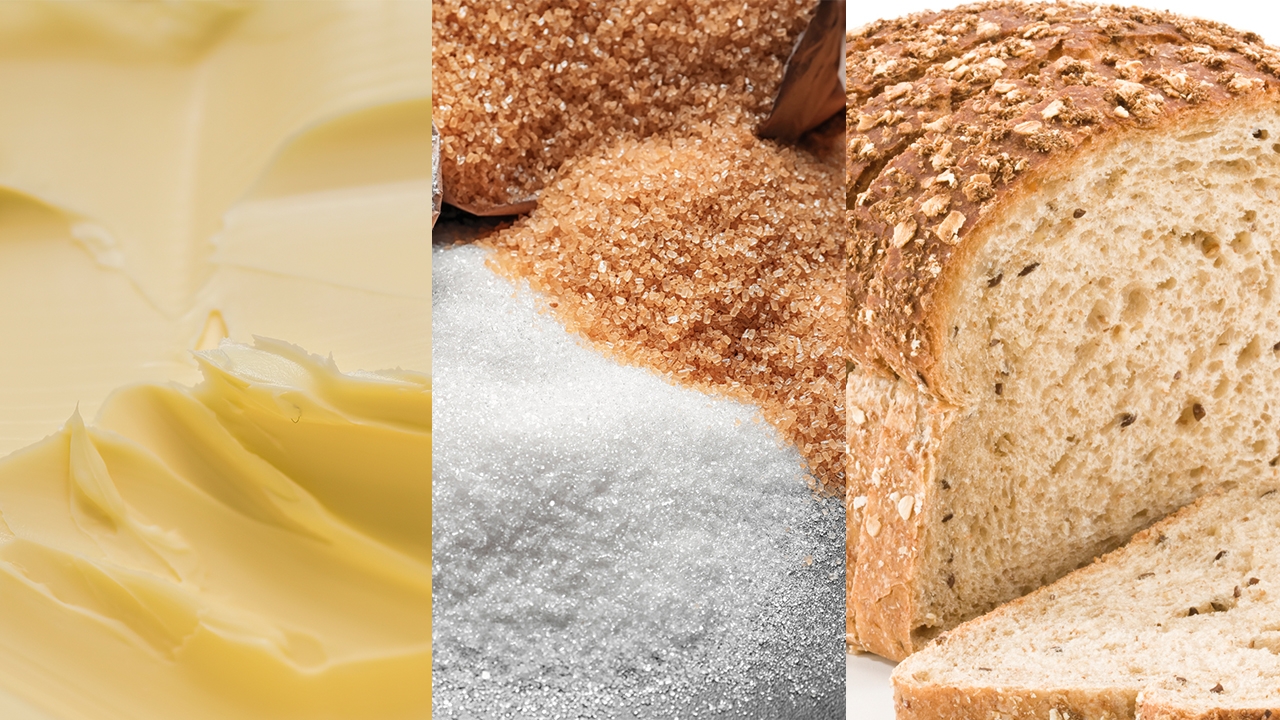 |
| Photo: foxnews |
White bread is one of a number of products that contain sugar without appearing noticeably sweet. According to the USDA National Nutrient Database, one slice of commercially prepared white bread has 1.4 grams of sugar. In a sandwich with two slices of white bread, expect to get nearly 3 grams of sugar from the bread alone.
White bread companies typically add sugar to their products during manufacturing. In one major brand, for example, sugar is the third ingredient behind flour and water. On its own, however, bleached wheat flour contains a trace amount of sugar. Per cup, this type of flour has nearly half a gram of sugar.
Expect to find some degree of sugar in products that contain white flour. A 4-inch diameter white pita made with white enriched flour, for example, contains 0.4 grams of sugar. A 6.5-inch diameter white pita, meanwhile, has 0.8 grams of sugar. Reduced-calorie white bread might have fewer calories than regular white bread, but it still contains sugar. One slice of reduced-calorie white bread contains 1.1 grams of sugar.
How much sugar is OK in a day?According to the American Heart Association (AHA), the maximum amount of added sugars you should eat in a day are ( 9 ): Men: 150 calories per day (37.5 grams or 9 teaspoons) Women: 100 calories per day (25 grams or 6 teaspoons) |
Why is American Bread So Sweet?
The cause of sweetness of American bread is something that is prevalent in a lot of average American foods. This is the heavy presence of high fructose corn syrup.
The American sweet tooth is something evident across a whole variety of different products on the market. White bread and even some whole wheat bread loaves are included in this. In fact, some brands contain so much added sugar that a loaf of bread will take up more calories than a snickers bar whilst containing just as much sugar, if not more.
Part of the reason for this difference in bread is how they are used. Whilst Americans may enjoy a good sandwich, they will be more likely to gravitate towards sweeter options than savoury. Examples include peanut butter and jelly. Meanwhile, in the UK and Europe, cheeses, sliced meat, some veg and maybe olive oil are commonly seen. As such, sweeter bread suits the former more, whilst more savoury loaves are better for the latter.
Why does America put sugar?
Americans buy lots of prepared foods, and manufacturers often add sugar trying to make more sales so Americans have gotten used to foods having lots of sugar. So when they make stuff from scratch they are disappointed if they don’t come out sweet like those prepared foods.
However, Why do Americans put syrup? So the reason we use so much corn syrup instead of sugar is that it’s cheaper for food makers. It’s cheaper because taxpayers pay for it to be cheaper to “protect” a native industry. This has a lot to do with the switch to corn syrup and the American processed foods industry.
Why is American bread so unhealthy?
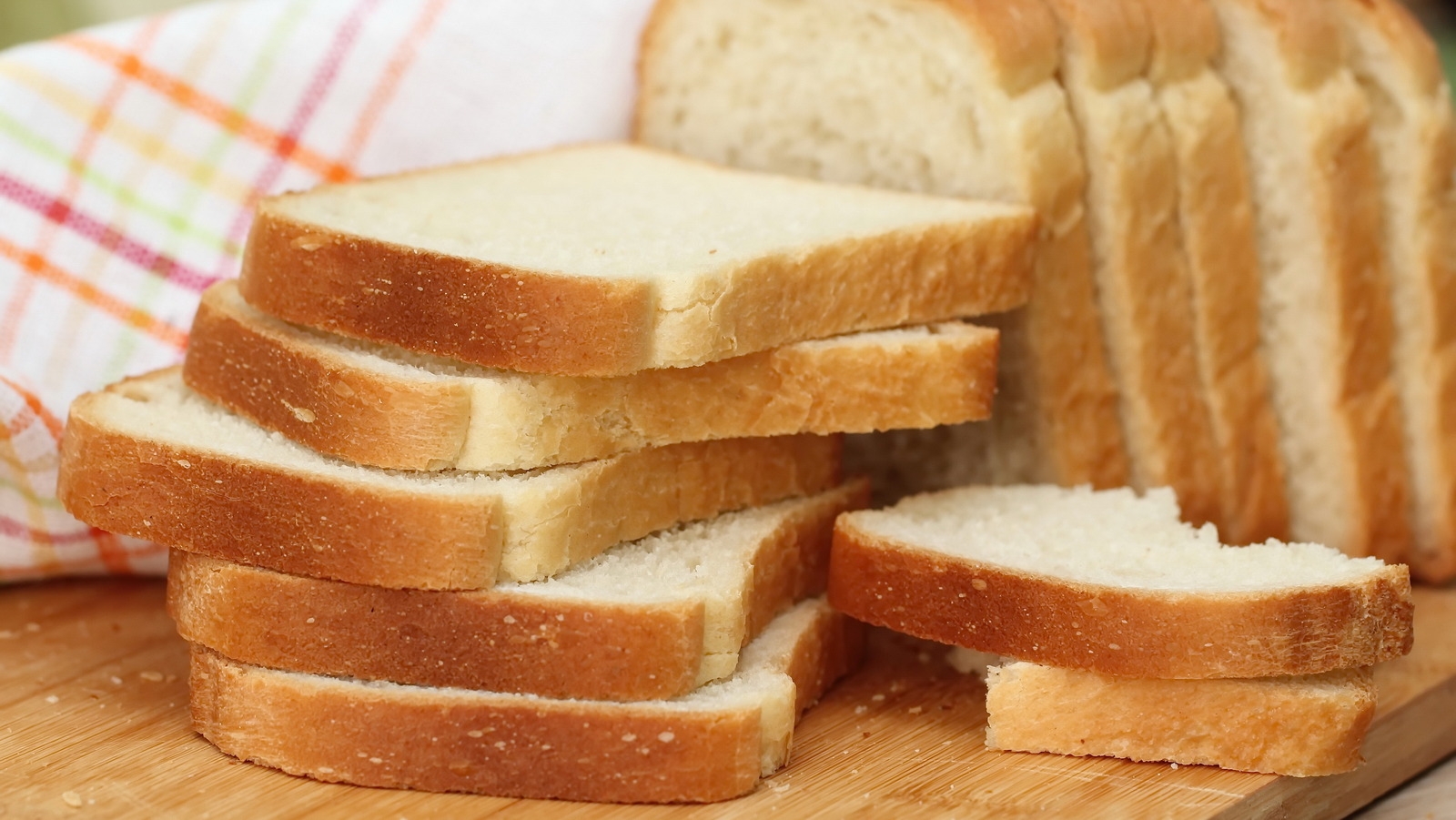 |
| Photo: mashed |
Here is a list of food additives commonly used to make bread in America that are typically restricted or banned in other countries around the world.
– Azodicarbonamide (whitener and dough conditioner): industrial chemical foaming agent used to make flip flops, yoga mats, and foam insulation. Linked to asthma and cancer. Banned in EU, Australia, and other countries.
– Potassium bromate and potassium iodate (rising agent): linked to cancer of the thyroid, peritoneum, kidneys, and other organs. Banned in EU, Canada, China, India, Brazil, and other countries. In many of these countries, they have been banned for over 10 years. California requires a warning label on products that contain potassium bromate.
– BHA & BHT (preservatives): are known to cause tumors in animals. Linked to endocrine disruption and thyroid problems.
Why Does American Bread Last So Long?
Have you ever wondered why American bread lasts so long? The answer is not as simple as the yeast. There are many factors that go into how long bread will last, and each factor impacts how quickly it spoils.
When buying or baking fresh bread, the first thing you want to consider is where the dough was made from. If the dough was made with flour that only contains wheat, salt, and water, it will last much longer than any other ingredients added like sugar, shortening, or eggs. To get an excellent idea of where the dough was made from, you can take a look at your ingredients list.
The Difference between American Bread vs British Bread
A loaf of bread in America is a very different beast to one from the UK. Just perusing the options in the bread aisle of an American grocery store would baffle and confuse many British and indeed European people.
American Bread
This is because American brands like Dave’s Killer Bread or Wonderbread are packed to the brim with high fructose corn syrup and various chemicals.
This results in a very sweet and sugary bread that lasts ridiculously long due to the sheer amount of preservatives. To non-Americans, this bread tastes weird and is often considered to be revolting.
This has even become a legal issue in parts of Europe. For example, in Ireland, a court judge ruled that Subway bread was legally not bread at all. The reasoning for this is because of the high quantities of added sugars. As such, in Ireland, Subway bread is legally seen as a confectionary, similarly to something like cake.
British and European Bread
Outside of some exceptions, European and British bread is typically savoury. In other countries than America, regular white and whole wheat bread loaves will have little to no sugar at all.
Whilst in America you may have to diligently hunt for bread without sugar, in Britain and Europe these are standard options whether at the local bakery or the bakery section of a supermarket.
What’s the healthiest bread brand in America?
With those criteria in mind, dietitians gave us their personal recommendations for the best healthy bread you can buy.
- Dave’s Killer Bread Powerseed.
- Ezekiel 4:9 Low Sodium Sprouted Whole Grain Bread.
- Arnold Whole Grains 100% Whole Wheat Bread.
- Nature’s Own Double Fiber Wheat.
- King’s Hawaiian Rainbow Bread.
Methods of Making Bread in America
 |
| Photo: eater |
There are two main methods of bread making used in bakeries today:
- The Bulk Fermentation Process (BFP)
- The Chorleywood Bread Process (CPB)
The Bulk Fermentation Process
This is a traditional method. Ingredients are mixed together to form a dough and left to ferment from one up to three hours. During fermentation, the dough changes from a short dense mass into elastic dough. Using different quantities of yeast and dough temperatures usually controls fermentation time. Smaller craft bakeries favour this method.
The Chorleywood Bread Process
The Flour Milling and Baking Research Association of Chorleywood in the UK developed this method in 1961. It is the most widely used method of bread making in bakeries today. It eliminates the time involved for fermentation in the traditional method.
Dough development is achieved by high-speed mixing and intense mechanical working of the dough in a few minutes. To achieve this, a flour treatment agent (Ascorbic Acid) and a little fat or emulsifier need to be added, usually in the form of a bread improver. Other than mixing and bulk fermentation, all other parts of the bread-making process – dough dividing, proving, baking, cooling, and slicing – are the same as any other way of making bread.
Most Popular Bread in the U.S.
10. Irish Soda Bread
9. Ezekiel Bread
8. Naan Bread
7. Pita Bread
6. French Bread
5. Sourdough Bread
4. Keto Bread
3. Pumpkin Bread
2. Zucchini Bread
1. Banana Bread
How much sugar does the average American consume per day?The average person in the United States consumes around 17 teaspoons , or 71.14 grams, of added sugar per day, which far exceeds recommended limits. A gram (g) of sugar contains about 4 calories, which means that many people consume almost 270 calories a day from added sugar alone. |
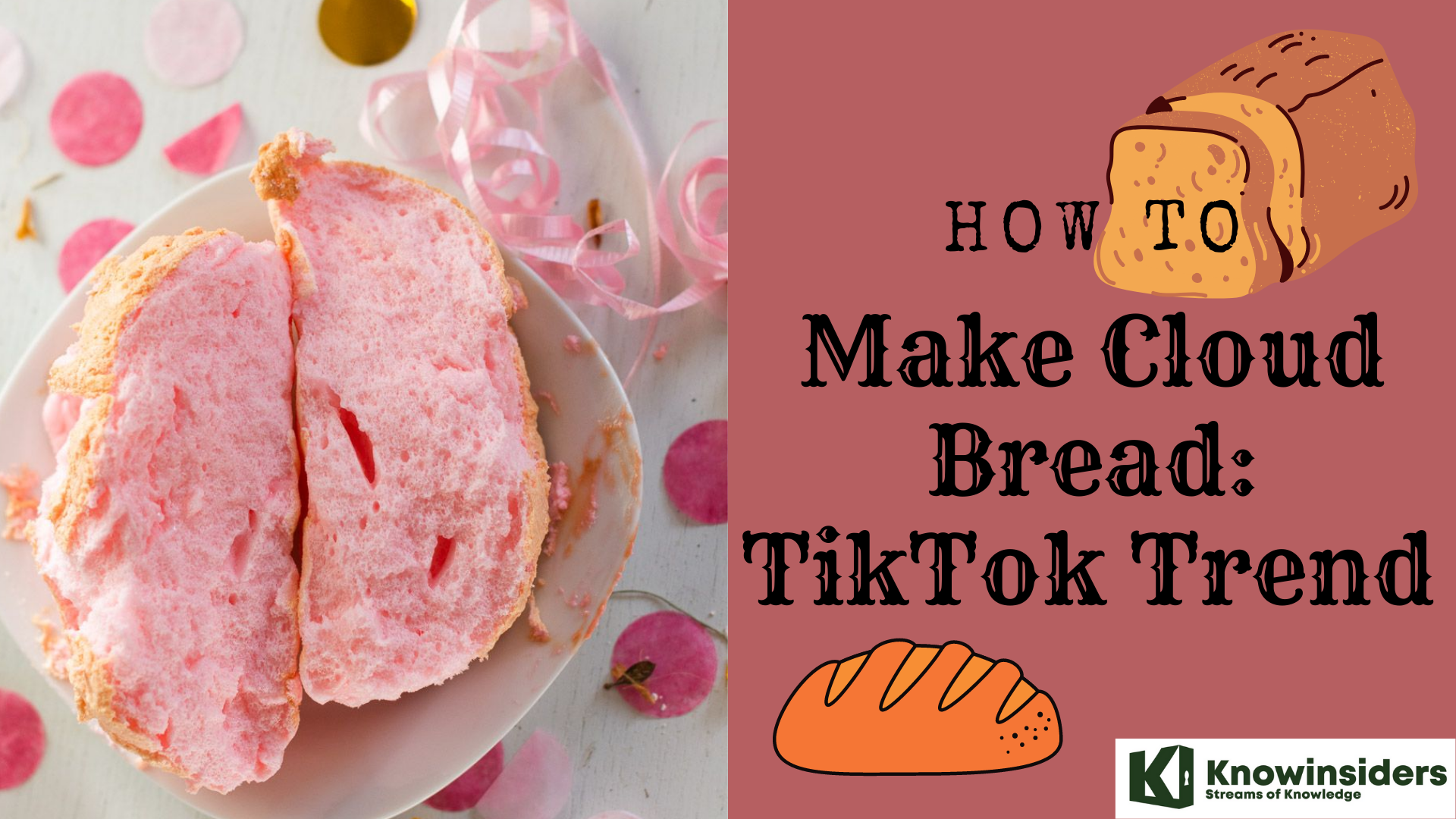 How To Make Cloud Bread With The Simpliest Recipes How To Make Cloud Bread With The Simpliest Recipes To learn how to make the TikTok's cloud bread with the simpliest recipe, keep reading the article below. |
 How to make sourdough bread? How to make sourdough bread? Sourdough bread with its long-standing history is one of the most preferred food thanks to nutrition and easy to digest. Many people are interested in ... |
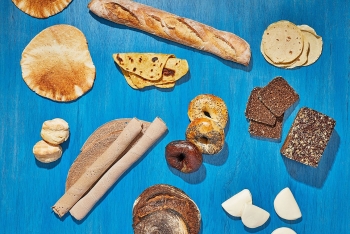 Top 7 Most Delicious Breads around the World Top 7 Most Delicious Breads around the World Bread, the humble accompaniment supporting meals around the world, it comes in thousands of styles, shapes and sizes. Let's find out the top 7 most ... |























